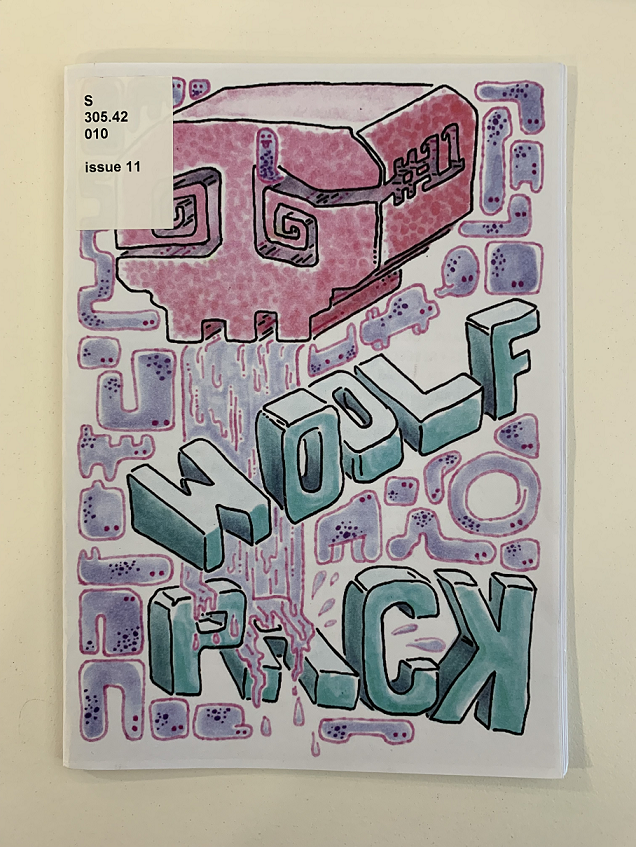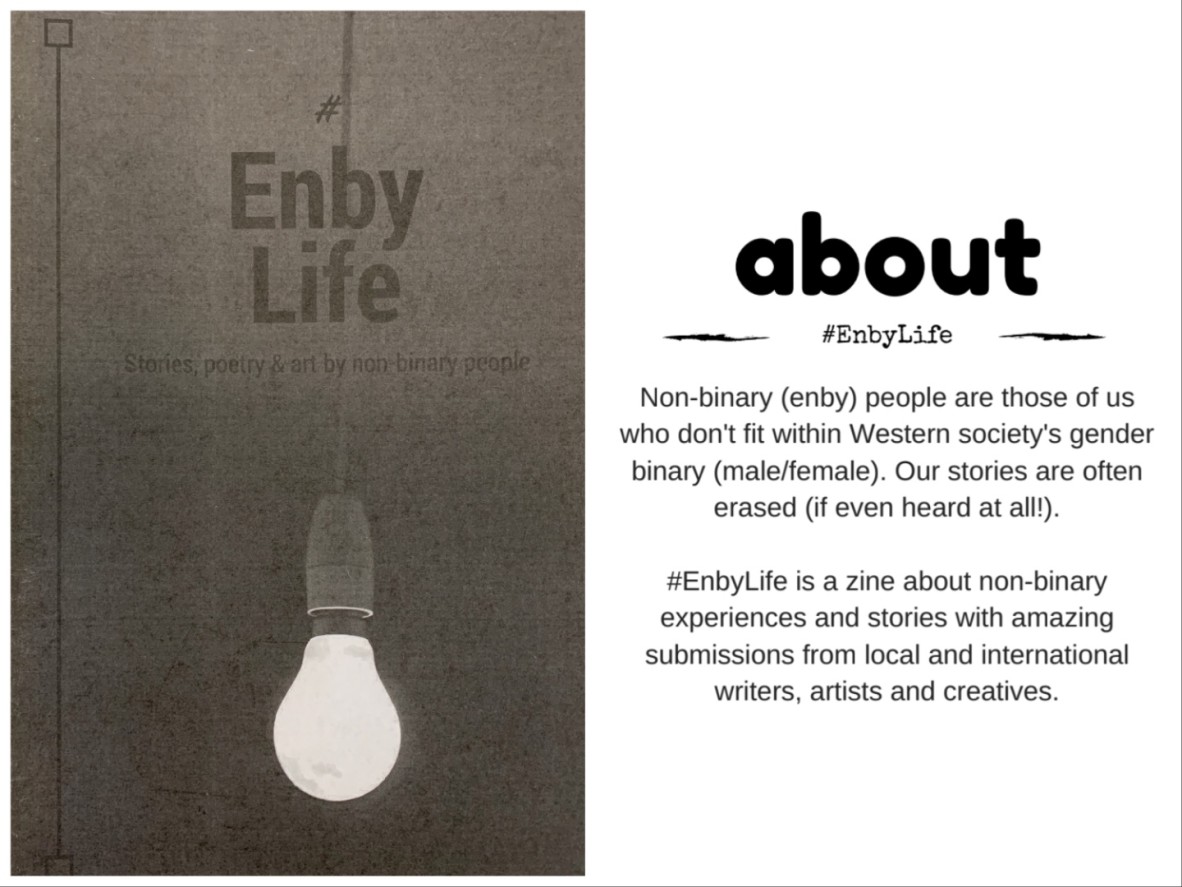Reading Community within Queer Collaborative Zines
By Bianca Martin, 2022 Rainbow Research Fellow | 24 July 2023
July is International Zine Month. While it’s not a formal holiday or day of recognition, it is celebrated within the zine community as an opportunity to read, discuss, and share zines and to also acknowledge their historical importance as a means of capturing narratives at certain points in time. A large part of my fellowship project is centred around mapping a contemporary history of the queer zine community in Queensland and my first step has been to thoroughly study the zine collection in the John Oxley Library.
Reading zines offers fantastic opportunities to look at the different ways community is brought together and how shared history is assembled. Zine communities are textual communities, where people connect through shared texts and shared reading and writing practices. These communities therefore don’t rely on physical in-person interactions but instead value “reading and writing as forms of human interaction and community building” (Eichhorn 2001, p. 566).
Looking at zines through this lens allows us to understand the unique ways those who participate in zine culture “develop intimate relationships with one another without ever actually meeting, let alone gathering in one place” (Sinor 2003, p. 244). The textual community of zines offers significant benefits for marginalised voices in particular, where an in-person geographically close group of peers may not exist or may experience barriers to safe access. Community building within the zine community can therefore be explicit, through active participation of making zines or implicit, through a shared sense of belonging and symbolic connection.
The JOL Collection features several examples of queer collaborative zines from Queensland. A collaborative zine is made by a group of people, led by a self-appointed editor who solicits a collection of writing and art brought together under a common theme. The end product is very similar to a magazine or literary journal, but is an amateur production that embraces a do-it-yourself handmade ethos and is self-published, self-funded, and self-distributed. Collaborative zines are particularly useful artefacts for understanding community as they actively work to bring a disparate set of voices together with the goal of promoting shared experience.
Woolf Pack was a Brisbane-based collaborative zine that ran in production from approximately 2014-2018 and featured art, personal essays, pop culture critiques, and poetry from queer feminist writers and artists. The text in Woolf Pack is computer-typed and printed, with the paragraphs cut and glued onto a contrasting coloured or patterned background with stickers and doodles along the borders. This technique gives the final product a handmade feel, suggesting to the reader that traditional barriers of access to publishing, such as professional graphic design skills, are not a requirement for zine making and therefore invites participation by signalling that anyone can contribute.

Front cover of Woolf Pack, issue 11, October 2018. State Library of Queensland collection
#EnbyLife is a one-off single issue zine published in 2016 featuring a collection of stories, poetry, and art by non-binary people. The opening pages of this zine provide a clear mission statement that this “is a zine about nonbinary experiences” and explains “our stories are often erased (if even heard at all!)”. With this clear statement, #EnbyLife actively prioritises representation and visibility, opening space for stories and imagery that have been historically suppressed or overlooked. Seeing yourself visually and physically represented on the page can hold enormous power, providing a framework in which to validate your experience and subjectivity

#EnbyLife - Stories, poetry and art by non-binary people. State Library of Queensland collection
Fruits of My Labour was a parenting zine and Issue #4 focusses on queer parenting specifically. The zine contains multiple submissions from queer parents that cover a variety of conception journeys, what their support networks look like, personal anecdotes about parenting as a nonbinary or gender diverse parent, and stories of experiencing discrimination or prejudice. Fruits depicts stories that are not often portrayed in mainstream media, utilising first-person personal narratives to create an honest and intimate space. Reading first-person accounts of marginalised experience allows readers to recognise that they are not alone in their experiences and provides them with the language to articulate those experiences.
Front cover of Fruits of My Labour, issue 4. State Library of Queensland collection
Queer Content is primarily a zine written by a single person, but Issue #2 was brought together as a collaborative zine with the subtitle ‘Queer Story Anthology’. It features poetry, comics, art, and other personal writing from six different contributors exploring different facets of queer experience in a sometimes humourous and matter-of-fact style. It is through these shared texts and images that a sense of belonging is strengthened, and the implicit work of community building can occur.
Front cover of Queer Content, issue 2. State Library of Queensland collection
Collaborative zines have played a key role in contributing to the history of the queer zine community in Queensland, but also laid the groundwork for my own research identifying individual contributors who may have also independently created their own zine. Through media that is created and controlled by marginalised voices, both in terms of content and production, we gain access to unfiltered narratives and first-hand accounts that are not commonly promoted through mainstream media. Assembling this writing and art together into a collaborative zine legitimises not only the work of the contributors as something of enduring value, but also legitimises the narratives held within the pages, building a strong symbolic connection between the reader and the maker.
REFERENCES
Eichhorn, K 2001, “Sites unseen: Ethnographic research in a textual community”, International Journal of Qualitative Studies in Education, vol 14, no. 4, pp. 565-578, http://dx.doi.org/10.1080/09518390110047075
Sinor, J 2003, “Another Form of Crying: Girl Zines as Life Writing”, Prose Studies, vol. 26, no. 1-2, pp. 240-264, http://dx.doi.org/10.1080/0144035032000235909
2022 Rainbow Research fellow, Bianca Martin talks about her project: LGBTQIA+ Zines in Contemporary Queensland
The Rainbow Research Fellowship supports research, exploration, and creation of new knowledge about Queensland’s LGBTIQA+ histories and communities using the John Oxley Library and State Library collections and resources. Applications for the 2024 Rainbow Research Fellowship are currently open until 5pm, 14 August, 2023.
Comments
Your email address will not be published.
We welcome relevant, respectful comments.